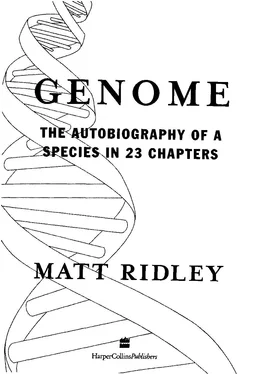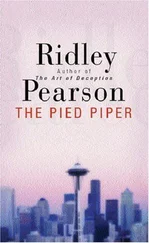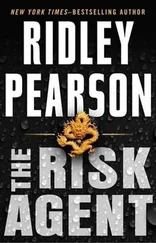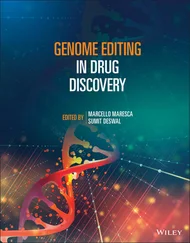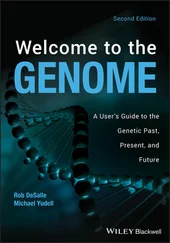Genome - Matt Ridley
Здесь есть возможность читать онлайн «Genome - Matt Ridley» — ознакомительный отрывок электронной книги совершенно бесплатно, а после прочтения отрывка купить полную версию. В некоторых случаях можно слушать аудио, скачать через торрент в формате fb2 и присутствует краткое содержание. Жанр: Старинная литература, на английском языке. Описание произведения, (предисловие) а так же отзывы посетителей доступны на портале библиотеки ЛибКат.
- Название:Matt Ridley
- Автор:
- Жанр:
- Год:неизвестен
- ISBN:нет данных
- Рейтинг книги:5 / 5. Голосов: 1
-
Избранное:Добавить в избранное
- Отзывы:
-
Ваша оценка:
- 100
- 1
- 2
- 3
- 4
- 5
Matt Ridley: краткое содержание, описание и аннотация
Предлагаем к чтению аннотацию, описание, краткое содержание или предисловие (зависит от того, что написал сам автор книги «Matt Ridley»). Если вы не нашли необходимую информацию о книге — напишите в комментариях, мы постараемся отыскать её.
Matt Ridley — читать онлайн ознакомительный отрывок
Ниже представлен текст книги, разбитый по страницам. Система сохранения места последней прочитанной страницы, позволяет с удобством читать онлайн бесплатно книгу «Matt Ridley», без необходимости каждый раз заново искать на чём Вы остановились. Поставьте закладку, и сможете в любой момент перейти на страницу, на которой закончили чтение.
Интервал:
Закладка:
excessive hygiene. Asthma, in other words, is much more like real life.
Asthma, moreover, is the tip of an iceberg of 'atopy'. Most asthmatics are also allergic to something. Asthma, eczema, allergy and anaphylaxis are all part of the same syndrome, caused by the same 'mast' cells in the body, alerted and triggered by the same immunoglobulin-E molecules. One person in ten has some form of allergy, the consequences in different people ranging from the mild inconvenience of a bout of hay fever to the sudden and fatal collapse of the whole body caused by a bee sting or a peanut. Whatever factor is invoked to explain the increase in asthma must also be capable of explaining other outbreaks of atopy. In children with a serious allergy to peanuts, if the allergy fades in later life then they are less likely to have asthma.
Yet just about every statement you care to make about asthma can be challenged, including the assertion that it is getting worse.
One study asserts that asthma incidence has grown by sixty per cent in the last ten years and that asthma mortality has trebled. Peanut allergy is up by seventy per cent in ten years. Another study, published just a few months later, asserts with equal confidence that the increase is illusory. People are more aware of asthma, more ready to go to the doctor with mild cases, more prepared to define as asthma something that would once have been called a cold. In the 1870s, Armand Trousseau included a chapter on asthma in his Clinique Medicale. He described two twin brothers whose asthma was bad in Marseilles and other places but who were cured as soon as they went to Toulon. Trousseau thought this very strange. His emphasis hardly suggests a rare disease. Still, the balance of probability is that asthma and allergy are getting worse and that the cause is, in a word, pollution.
But what kind of pollution? Most of us inhale far less smoke than our ancestors, with their wood fires and poor chimneys, would have done. So it seems unlikely that general smoke can have caused the recent increase. Some modern, synthetic chemicals can cause dramatic and dangerous attacks of asthma. Transported about the 6 8 G E N O M E
countryside in tankers, used in the manufacture of plastics and leaked into the air we breathe, chemicals such as isocyanates, trimellitic anhydride and phthalic anhydride are a new form of pollution and a possible cause of asthma. When one such tanker spilled its load of isocyanate in America it turned the policeman who directed traffic around the wreck into an acute and desperate asthmatic for the remainder of his life. Yet there is a difference between acute, concentrated exposure and the normal levels encountered in everyday life.
So far there is no link between low-level exposure to such chemicals and asthma. Indeed, asthma appears in communities that never encounter them. Occupational asthma can be triggered in people who work in much more low-tech, old-fashioned professions, such as grooms, coffee roasters, hairdressers or metal grinders. There are more than 250 defined causes of occupational asthma. By far the commonest asthma trigger — which accounts for about half of all cases - is the droppings of the humble dust mite, a creature that likes our fondness for central-heated indoor winter stuffiness and makes its home inside our carpets and bedding.
The list of asthma triggers given by the American Lung Association covers all walks of life: pollen, feathers, moulds, foods, colds, emotional stress, vigorous exercise, cold air, plastics, metal vapours, wood, car exhaust, cigarette smoke, paint, sprays, aspirin, heart drugs'
— even, in one kind of asthma, sleep. There is material here for anybody to grind any axe they wish. For instance, asthma is largely an urban problem, as proved by its sudden appearance in places becoming urban for the first time. Jimma, in south-west Ethiopia, is a small city that has sprung up in the last ten years. Its local asthma epidemic is ten years old. Yet the meaning of this fact is uncertain. Urban centres are generally more polluted with car exhaust and ozone, true, but they are also somewhat sanitised.
One theory holds that people who wash themselves as children, or encounter less mud in everyday life, are more likely to become asthmatics: that hygiene, not lack of it, is the problem. Children with elder siblings are less likely to get asthma, perhaps because their siblings bring dirt into the house. In a study of 14,000 children E N V I R O N M E N T 6 9
near Bristol, it emerged that those who washed their hands five times a day or more and bathed twice a day, stood a twenty-five per cent chance of having asthma, while those who washed less than three times a day and bathed every other day had slightly over half that risk of asthma. The theory goes that dirt contains bacteria, especially mycobacteria, which stimulate one part of the immune system, whereas routine vaccination stimulates a different part of the immune system. Since these two parts of the immune system (the Th1 cells and the Th2 cells respectively) normally inhibit each other, the modern, sanitised, disinfected and vaccinated child is bequeathed a hyperactive Th2 system, and the Th2 system is specially designed to flush parasites from the wall of the gut with a massive release of histamine. Hence hay fever, asthma and eczema. Our immune systems are set up in such a way that they 'expect' to be educated by soil mycobacteria early in childhood; when they are not, the result is an unbalanced system prone to allergy. In support of this theory, asthmatic attacks can be staved off in mice that have been made allergic to egg-white proteins by the simple remedy of forcing them to inhale mycobacteria. Among Japanese schoolchildren, all of whom receive the B C G inoculation against tuberculosis but only sixty per cent of whom become immune as a result, the immune ones are much less likely to develop allergies and asthma than the non-immune ones. This may imply that giving the Th1 cells some stimulation with a mycobacterial inoculation enables them to suppress the asthmatic effects of their Th2 colleagues. Throw away that bottle steriliser and seek out mycobacteria.1
Another, somewhat similar, theory holds that asthma is the unleashed frustration of the worm-fighting element in the immune system. Back in the rural Stone Age (or the Middle Ages, for that matter), the immunoglobulin-E system had its hands full fighting off roundworms, tapeworms, hookworms and flukes. It had no time for being precious about dust mites and cat hairs. Today, it is kept less busy and gets up to mischief instead. This theory rests on a slightly dubious assumption about the ways in which the body's immune system works, but it has quite a lot of support. There is 7 0 G E N O M E
no dose of hay fever that a good tapeworm cannot cure, but then which would you rather have?
Another theory holds that the connection with urbanisation is actually a connection with prosperity. Wealthy people stay indoors, heat their houses and sleep on feather pillows infested with dust mites. Yet another theory is based on the undoubted fact that mild, casual-contact viruses (things like common colds) are increasingly common in societies with rapid transport and compulsory education.
Schoolchildren harvest new viruses from the playground at an alarming rate, as every parent knows. When nobody travelled much, the supply of new viruses soon ran out, but today, with parents jetting off to foreign lands or meeting strangers at work all the time, there is an endless supply of new viruses to sample at the saliva-rich, germ-amplifying stations we call primary schools. Over 200 different kinds of virus can cause what is collectively known as the common cold. There is a definite connection between childhood infection with mild viruses, such as respiratory syncitial virus, and asthma susceptibility. The latest vogue theory is that a bacterial infection, which causes non-specific urethritis in women and has been getting commoner at roughly the same rate as asthma, may set up the immune system in such a way that it responds aggressively to allergens in later life. Take your pick. My favourite theory, for what it is worth, is the hygiene hypothesis, though I wouldn't go to the stake for it. The one thing you cannot argue is that asthma is on the increase because 'asthma genes' are on the increase. The genes have not changed that quickly.
Читать дальшеИнтервал:
Закладка:
Похожие книги на «Matt Ridley»
Представляем Вашему вниманию похожие книги на «Matt Ridley» списком для выбора. Мы отобрали схожую по названию и смыслу литературу в надежде предоставить читателям больше вариантов отыскать новые, интересные, ещё непрочитанные произведения.
Обсуждение, отзывы о книге «Matt Ridley» и просто собственные мнения читателей. Оставьте ваши комментарии, напишите, что Вы думаете о произведении, его смысле или главных героях. Укажите что конкретно понравилось, а что нет, и почему Вы так считаете.
